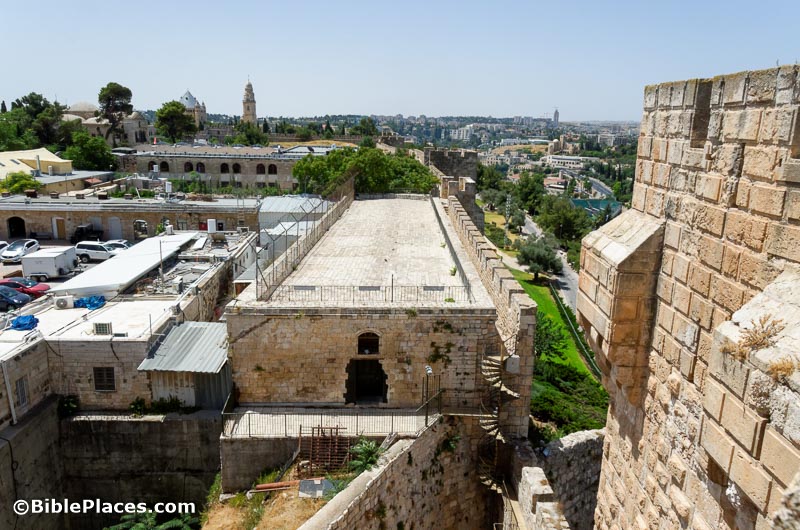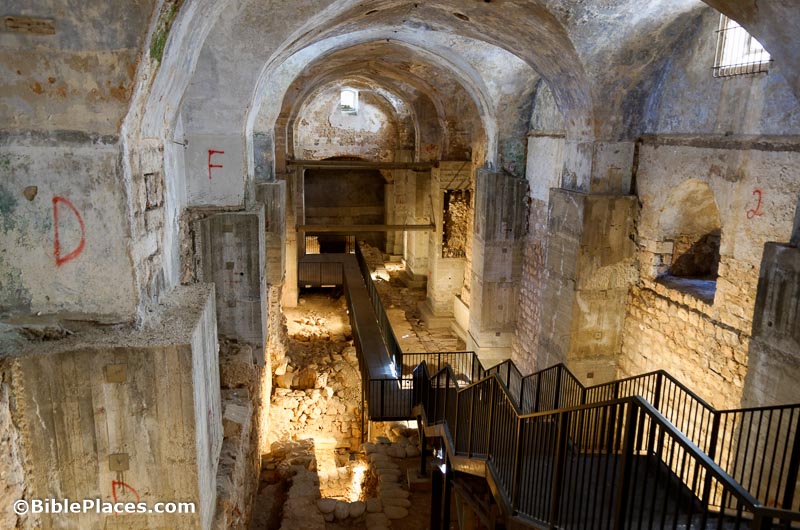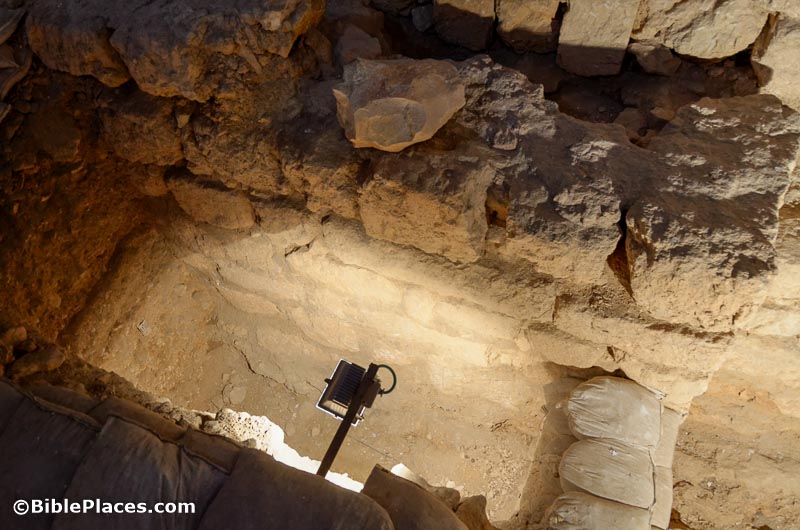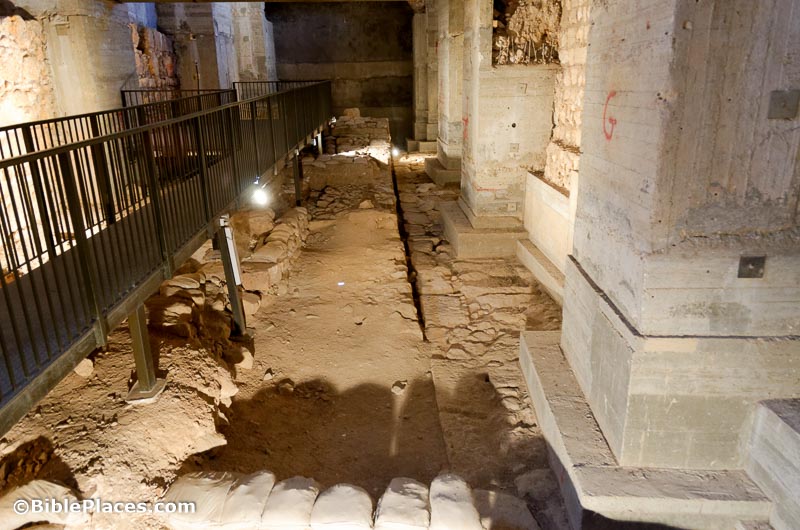There is an Israeli police station today just inside Jaffa Gate to the right. The Israelis took it over from the Jordanians who used it for the same purpose. The Jordanians inherited it from the British Mandate authorities. One of the buildings of this complex is known as the Kishle. The Kishle served as the prison during British Mandate times. Before the British, the building served the Ottoman police force. And before them, this was the location of the Roman legion charged with keeping the peace in the centuries following the Jewish Revolt. And below that archaeologists have discovered foundations of King Herod’s palace.
There’s clearly a pattern here, and it’s likely related to the geography. This area is the high ground on the Western Hill, and it provides a commanding position of the surrounding area. Unfortunately all of this construction has made uncovering earlier remains difficult. In fact, in the conclusion of the article being summarized here, the archaeologist soberly notes that all that left of Herod’s great palace are scattered remnants of its podium.
 |
| Kishle building from the north |
Amit Re’em excavated the Kishle in 2000 and 2001, and his report in Ancient Jerusalem Revealed provides a summary of his discoveries. The article is succinct and well-illustrated, moving from the earlier periods to the later ones. My focus here will be the same as that named in the title of the article, “First and Second Temple Period Fortifications and Herod’s Palace in the Jerusalem Compound.”
 |
| Kishle interior |
What gets me most excited about this excavation is not the foundations of Herod’s palace but a large section of wall constructed by Hezekiah. If you have studied Jerusalem’s history, you know of the “Broad Wall,” a 25-foot-wide fortification located today in the middle of the Jewish Quarter. What Re’em revealed is more of this same wall, but on the western side of the Western Hill. This is valuable because this is now only the second portion of this wall discovered to date. (This point is a useful illustration of how relatively little is either preserved or accessible in Jerusalem today.)
A length of about 50 feet was exposed, preserved to a height of 8 to 9 feet. That’s not as big as the “Broad Wall” portion, but it’s quite substantial. The construction was also impressive, as the wall was made of “large, well-trimmed stones (90×35 cm.) laid in header/stretcher fashion in the best tradition of First Temple period fortification construction.”
 |
| City wall from time of King Hezekiah |
But then Re’em goes a step further, claiming that the common view that Jerusalem’s Western Hill was quickly populated with exiles from Samaria is wrong. I think it’s best to hear his claim in his own words:
The new finds from the Kishle contradict [previous] researchers’ conclusion that Jerusalem, limited to the area [of] the City of David and the Temple Mount, rapidly developed to occupy the Western Hill as a result of a mass influx of refugees to Judah and Jerusalem following the Assyrian destruction of the northern Kingdom of Israel at the end of the 8th century BCE. The settlement process on the Western Hill appears to have been gradual, beginning during the first half of the 8th century BCE.
Unfortunately he moves straight on to the next subject without giving a scrap of evidence for his conclusion. I would say that there is evidence in the Bible, usually ignored, that indicates that Jerusalem’s Western Hill was not only settled earlier in the 8th century, but it was also fortified! I think I’ll follow Re’em’s example by throwing that out there and then just moving on.
The Kishle excavations also revealed some of the “First Wall,” built by the Hasmoneans in the 2nd century. Re’em uncovered remains of this wall that were 16 feet wide and exposed for a length of 75 feet. It may be noted that all of these excavations are constrained by the walls of the elongated structure of the Kishle.
From Herod’s palace we have some walls, and the article gives the dimensions, the most interesting of which is one that was preserved to a height of 22 feet. The discussion here is not much more than a page long, and the bottom line is that when you combine results from this dig with others in the area, it is clear that Herod’s palace was massive in size, covering the area of the Citadel, the Kishle, the Armenian Garden, and most of today’s Armenian Quarter.
 |
| Foundation wall of Herod’s palace |
The final section of this article surveys discoveries from later periods, including a Late Roman channel, medieval dyeing vats, a wall that is probably Ayyubid, and graffiti inscribed by prisoners held by the British Mandate authorities.
2 thoughts on “Ancient Jerusalem Revealed: Hezekiah’s Wall and Herod’s Palace”
In almost all of the excavations on the western hill – late Iron IIA/9th century pottery was present (including Avigad's excavations) – it seems that the settling of the western hill was gradual but it began well before 722 BC…
The "header/stretcher fashion" is more commonly associated with the Phoenician builders of Solomon's time. Hezekiah's walls do not incorporate this type of construction. Warren discovered a wall similar to this one just outside the Eastern Gate of the Temple Mount which has been attributed to Solomon. Thank you for this thought provoking post.